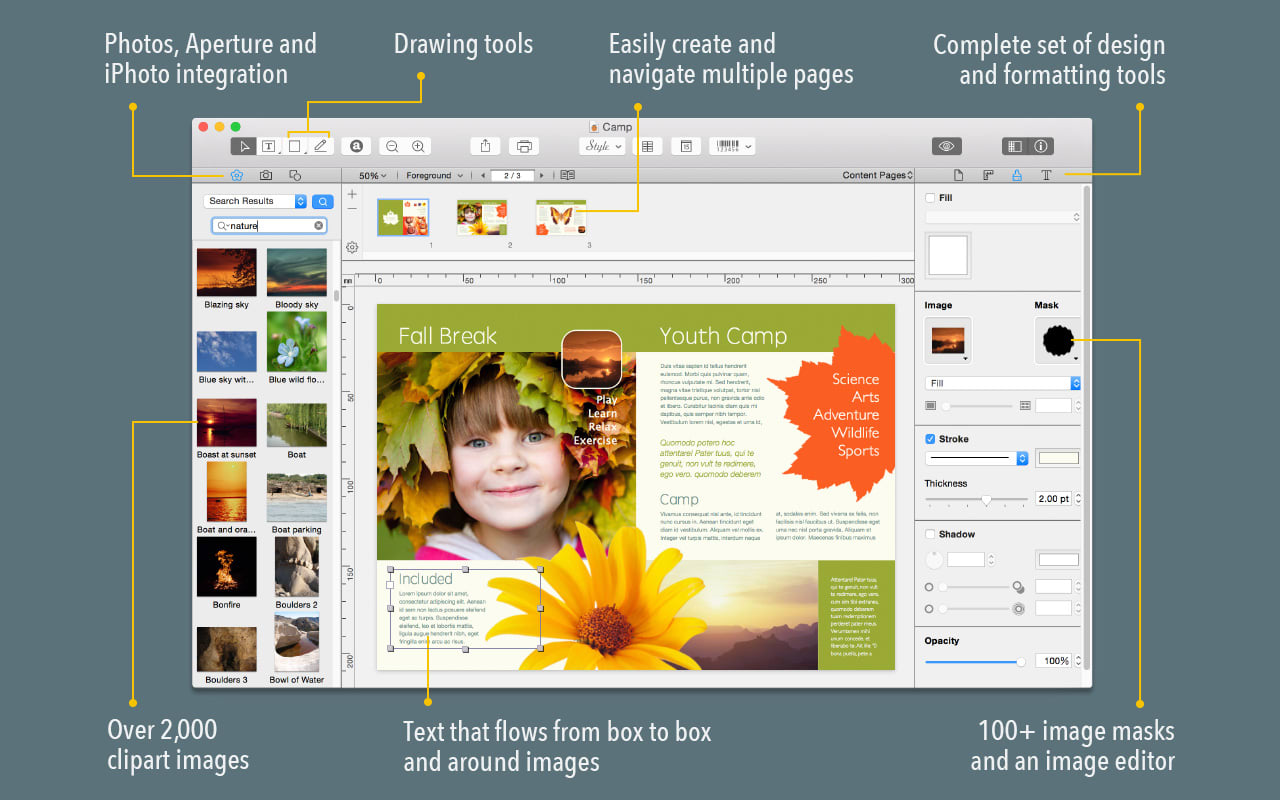
- Swift publisher for mac tutorial pdf#
- Swift publisher for mac tutorial generator#
- Swift publisher for mac tutorial pro#
Swift publisher for mac tutorial pro#
The effects are a small subset that is available in the Image Tricks Pro application, which is a separate application by Belight that cost $9.99.
Swift publisher for mac tutorial generator#
Sample of some of the images generated by the Random Image Generator in Swift Publisher. You can find the tool by going to Insert > Image > Generate Random. This can be useful as a background or as a special effect in your document. Swift Publisher has a feature where you can add Random Image patterns. (Such as a Thank You Note.) You can add the Note using the Insert > Address Field > Other > Notes option. This could be a good place to add a personal note to the person. When you add Contacts in the Contact App there's a Note field.
Swift publisher for mac tutorial pdf#
The best option is to click on the PDF option on the lower left of the dialog and select "Open in Preview." You'll get a nice full-size preview of the document. The problem is that the preview is too small to see your text in the document. There is a small preview of the document in the print dialog. This makes it easier to find the contacts. Within Contact App, you can set up groups for different segments such as Family, Christmas Card, etc. When printing the document you'll be asked which contacts you wish to use for the document. The placeholder field name is not supported in the 2D Text or the 3D Text styles. The placeholder text has been selected from the Insert > Address Field > Field Name menu option. Swift Publisher uses the macOS Contact database, which is nice since you don't have to go out of the way to create a whole new mail merge database. This is when you put in placeholders and when you print the document, the place holders get replaced with the content of a database. With both our custom publisher and subscription type completed, we’re now almost finished with our new Combine-powered control event API.Swift Publisher has the ability to do mail merge in the documents. UIControl instance, we'll simply pass Void to our Whenever an event was triggered by the underlying additional events from being sent to it:

the reference to our target to prevent any

When our subscription was cancelled, we'll release Observing our property's value directly: let allItemsSubscription = list. For example, here we’re adding that sort of functionality to an item property contained within a TodoList class: class TodoList private(set) var items: īy simply adding the above annotation to our items property, we’re now able to use Combine to both observe and transform any changes to that property’s value, since any property can easily be turned into a publisher using its projected value - like this: let list = TodoList(.) However, that property wrapper can also be used outside of SwiftUI as well, and provides a way to automatically generate a publisher that emits a new value whenever a given property was changed. Perhaps the currently most common way of using Combine is through the property wrapper, which plays a really important role in SwiftUI’s overall state management system. Built-in alternativesīefore we jump into building custom publishers, however, let’s start by taking a look at a few of the built-in alternatives that Combine ships with. This week, let’s take a look at what sort of situations that might warrant a custom publisher, and a few examples of what building one could entail. Within the world of Combine, an object that emits such asynchronous values and events is called a publisher, and although the framework does ship with quite a large number of built-in publisher implementations, sometimes we might want to build our own, custom ones in order to handle specific situations. Apple’s Combine framework provides a general-purpose abstraction for asynchronous programming, by enabling various values and events to be emitted, transformed and observed over time.


 0 kommentar(er)
0 kommentar(er)
